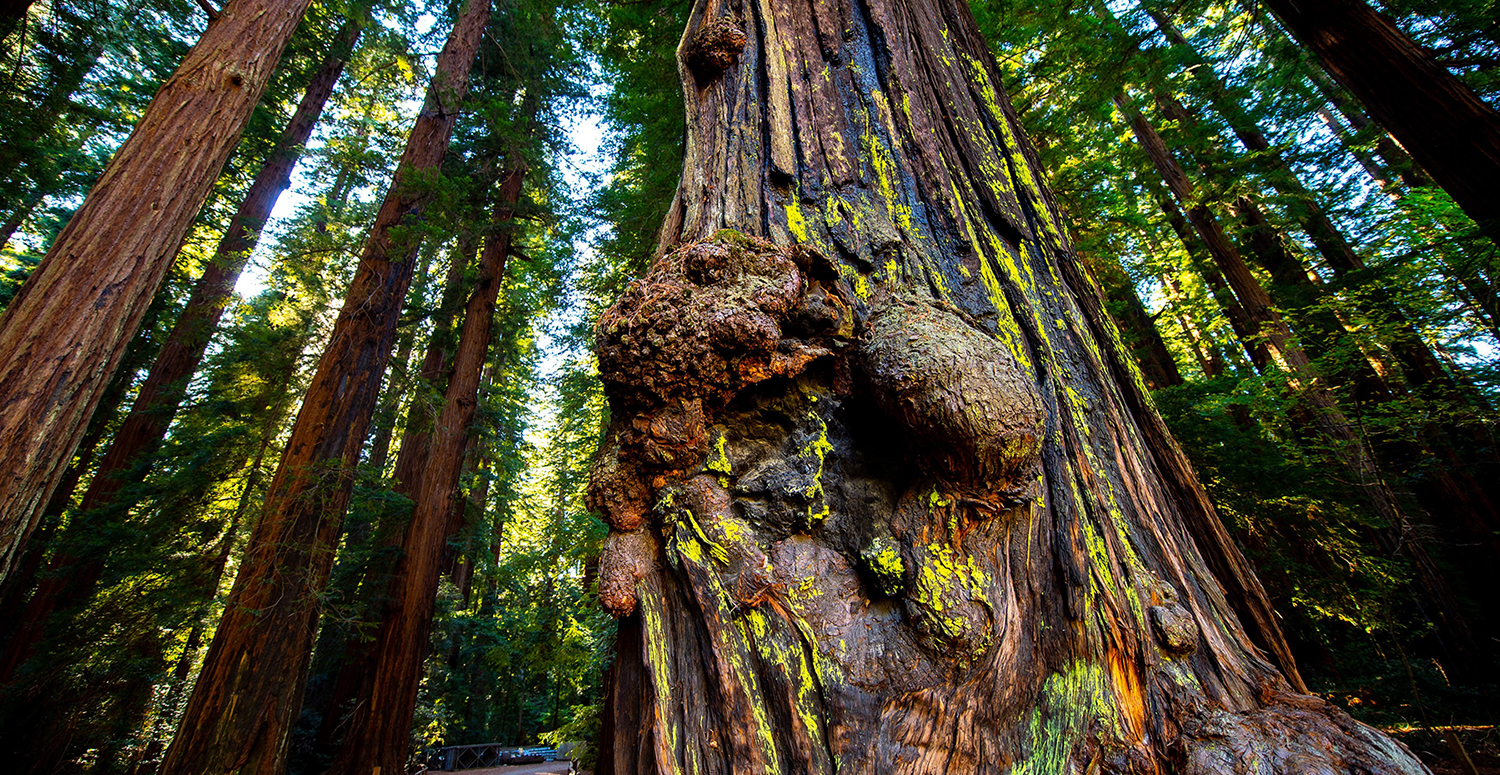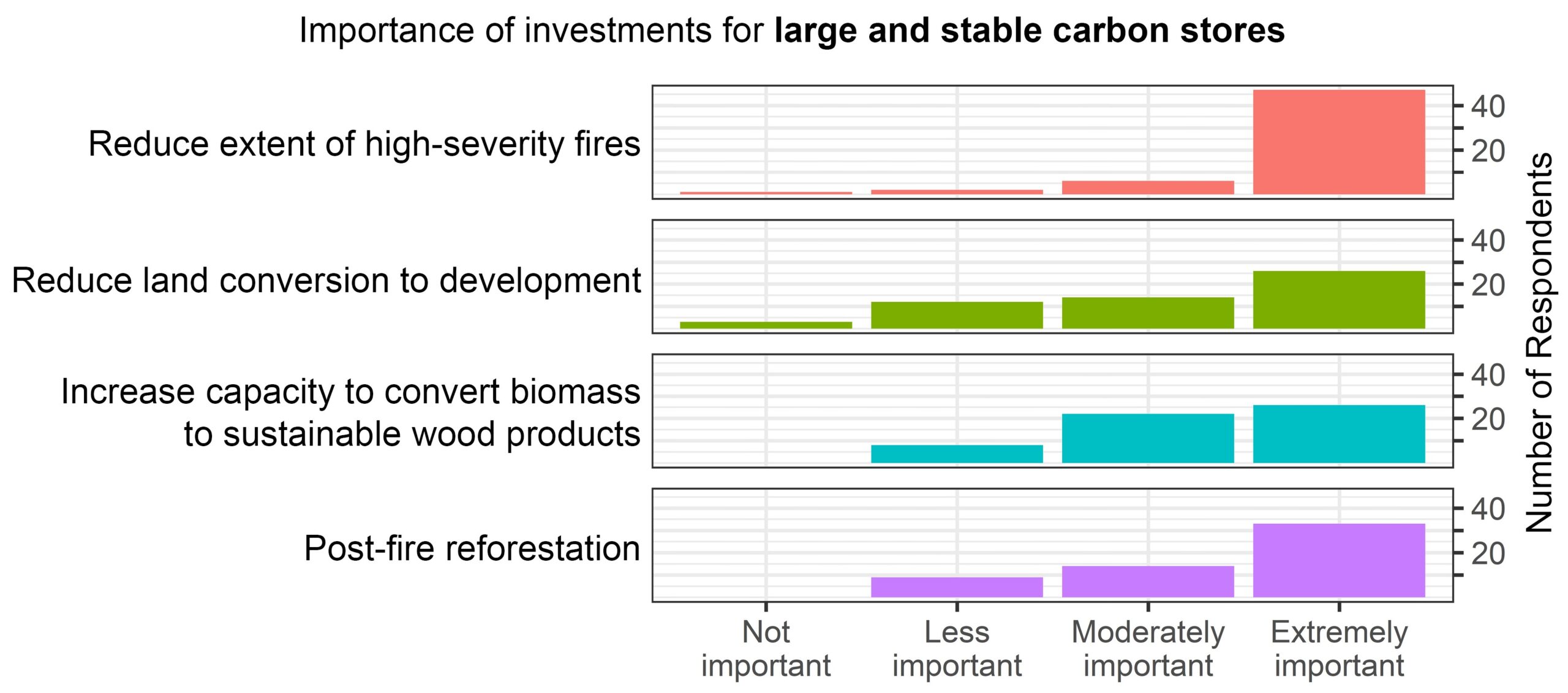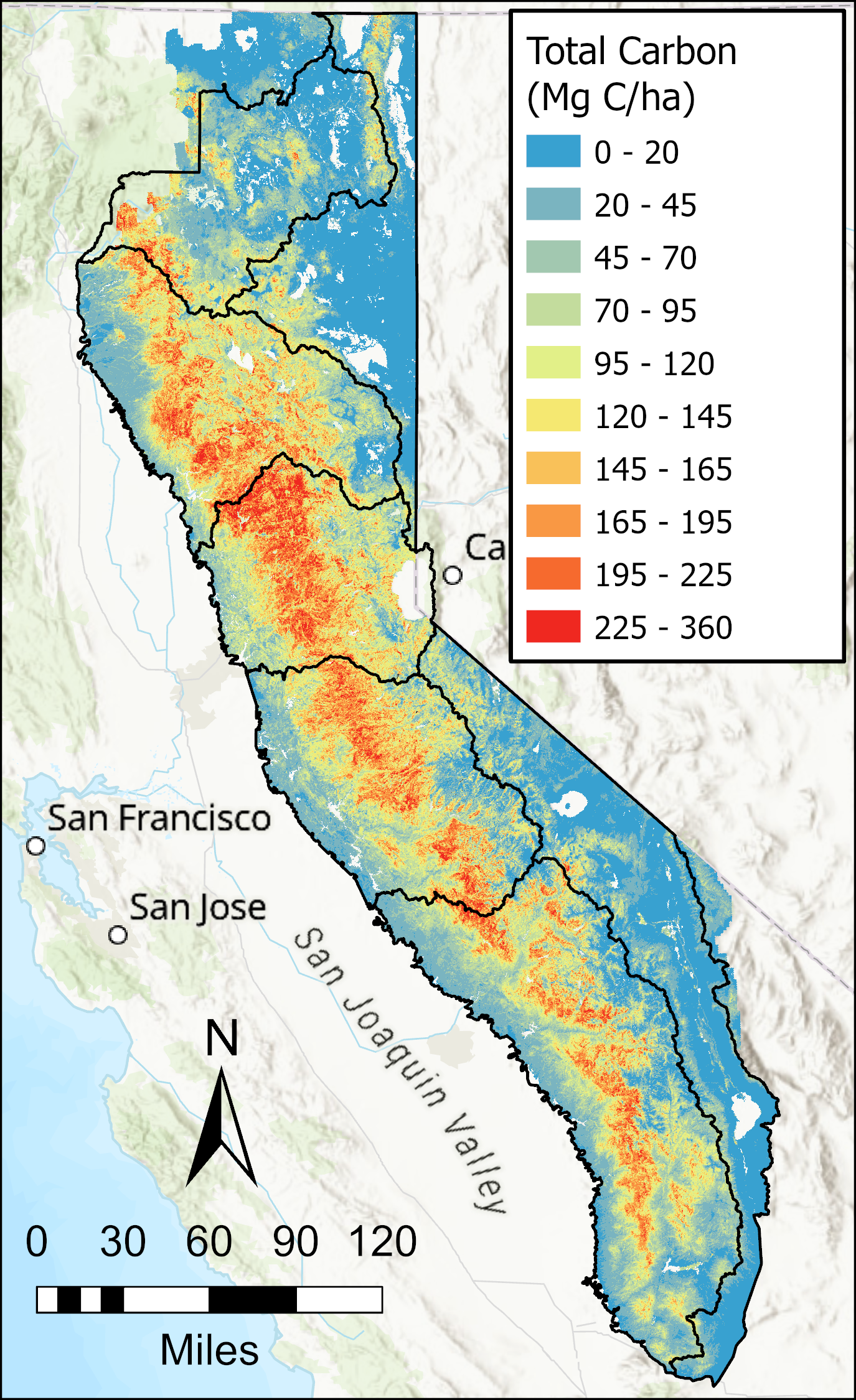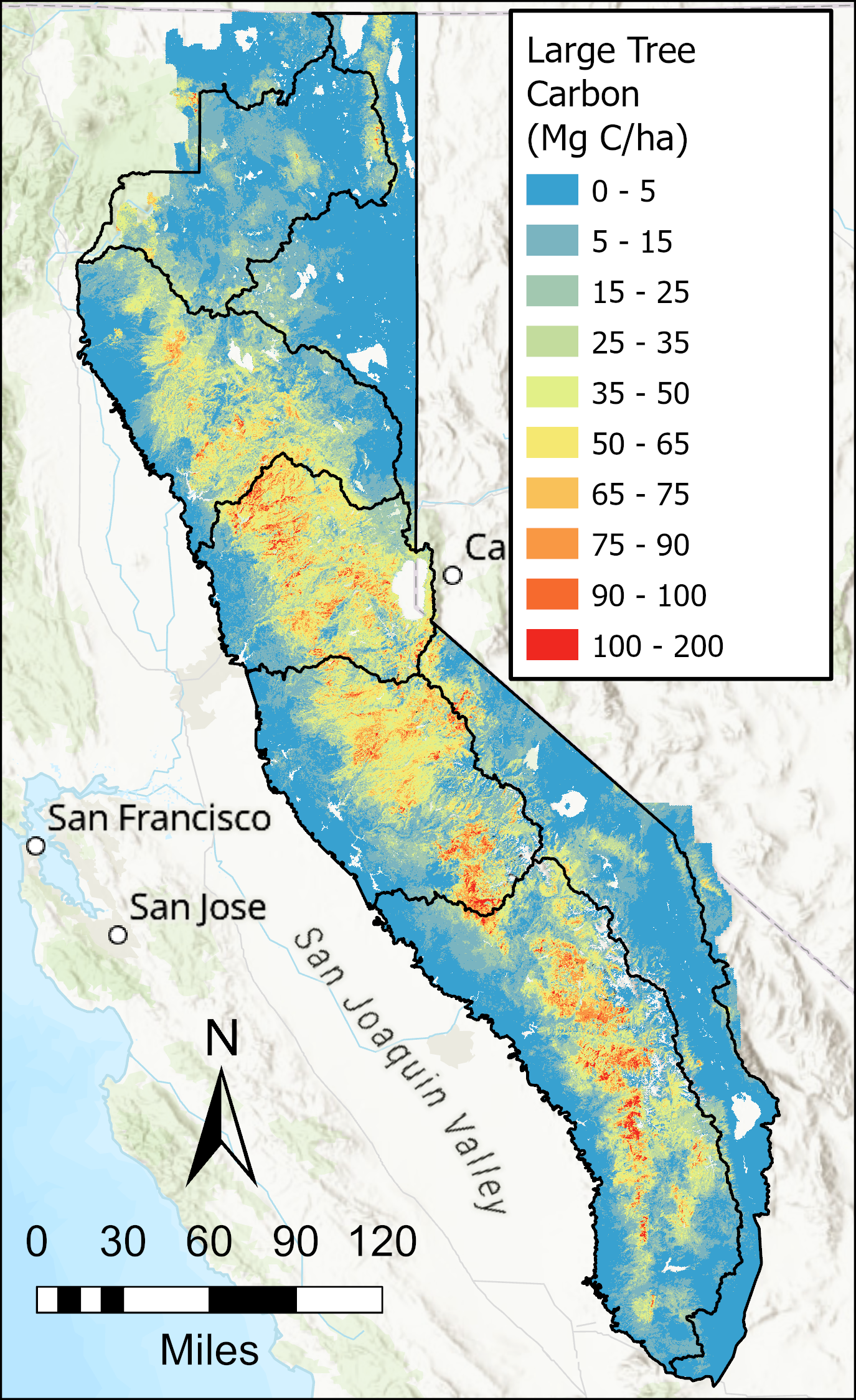Sierra Nevada Regional Profile
CARBON STORAGE

Overview
The Sierra Nevada region functions as a critical carbon stock by storing nearly half of the forest carbon stocks in California. Storing and sequestering carbon in these stocks is essential to state efforts to achieve carbon neutrality and increase resilience to climate change. Today, much of the carbon of Sierra Nevada mixed-conifer forests is stored in smaller trees, which are increasingly vulnerable to fire and the effects of climate change. Carbon sequestration has declined due to increasing frequency and severity of disturbances, leading to abrupt (e.g., wildfire) and/or gradual (e.g., bark beetle outbreaks) transfers of carbon to the atmosphere and dead organic matter pools and soils. Depending on fire severity, wildfire plumes can also contribute significant greenhouse gas emissions, further contributing to climate change.
Fortunately, management action can reduce carbon emissions and increase carbon sequestration: thinning dense forests can trigger a return to similar historical processes, in which initial losses of carbon from lost trees can be regained and stored more securely in the remaining large trees. Reducing fuels can reduce the likelihood of crown fires, thereby protecting the carbon stored in live trees and promoting more stable annual sequestration. Carbon losses from mechanical thinning treatments can also be further mitigated if the removed biomass is converted into durable wood products, which continue to store carbon, or is converted into bioenergy, which can substitute for more carbon-intensive energy production.
Stakeholder Perspectives

Resource Conditions
The regional resource kits rely on two metrics to assess carbon storage on the landscape.
Total Above Ground Carbon

The total aboveground carbon is the amount of carbon present in all live and dead trees, shrubs, herbaceous vegetation, and dead material on the ground. Understanding the magnitude of carbon stored on a landscape may help inform the location and type of treatment activities.
Large Tree Carbon

Large tree carbon is a measure of carbon stability. It is the sum of the branches, stems, and foliage of trees greater than 30” in diameter. This is important because the carbon that’s stored in these larger trees is not likely to be released back into the atmosphere, unless a severe disturbance event occurs.
